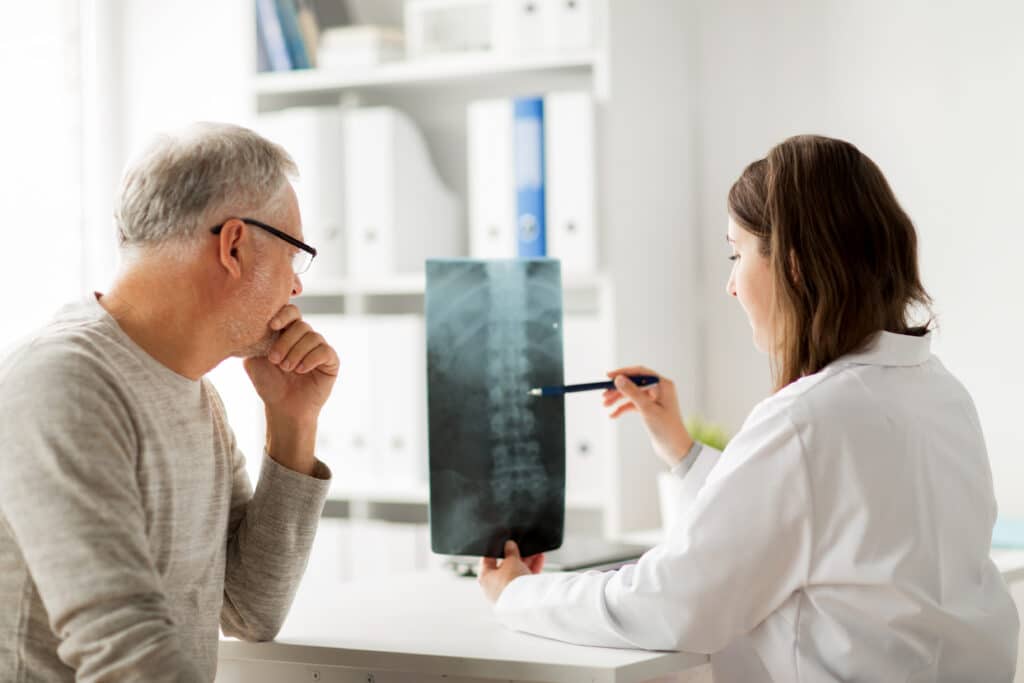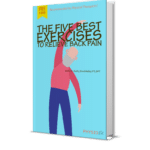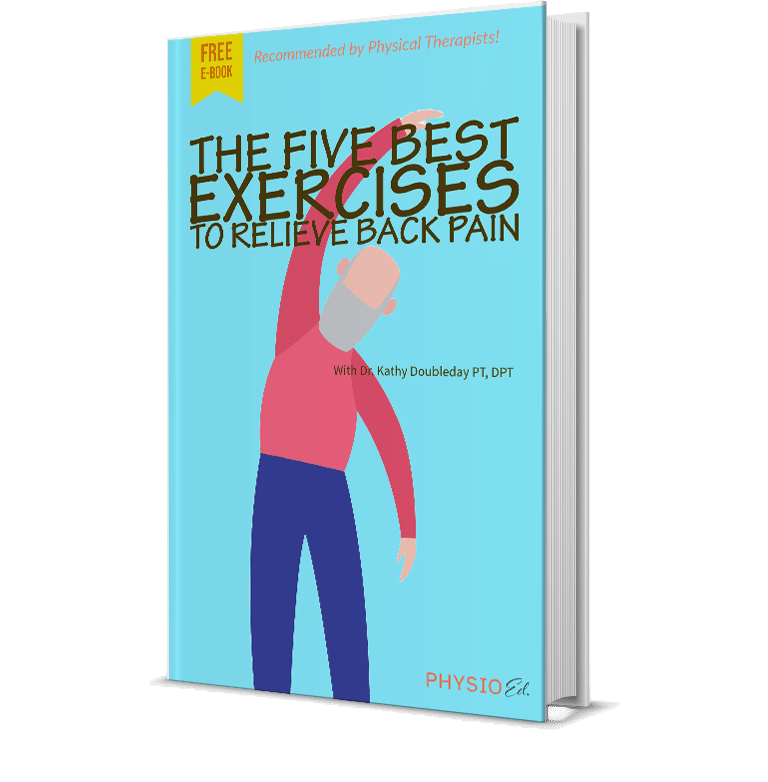Back pain can be frustrating, affecting our daily activities and overall quality of life. Spinal decompression at home could offer significant relief without visiting a hospital. So, what is spinal decompression exactly, and how can it be done in the comfort of your home?
Decompression offers several advantages for older adults with chronic back pain or spinal issues. It can reduce pain and inflammation, enhance mobility and function, and be an alternative to surgery for certain conditions. Most importantly, it can help you feel better.
This guide focuses on non-surgical methods for spinal decompression, including specific exercises or devices you can use in the comfort of your home.
Spinal decompression isn’t suitable for everyone; this guide will help you understand who should or shouldn’t try spinal decompression at home, how to do it safely, and how to maintain a healthy back in the long term.
What is Spinal Decompression?
The spine, a complex structure of bones called vertebrae, is cushioned by soft discs that absorb shock. These discs and the nerves that run through the spine can sometimes be subject to pressure, causing discomfort and pain.
Spinal decompression relieves pressure by stretching the spine, creating more space for the discs and nerves to function optimally.
Spinal decompression can happen through surgical or non-surgical methods. Surgical spinal decompression involves removing part of the disc or bone which are compressing the nerve, creating more space for the nerve to function normally.
Non-surgical spinal decompression involves:
- Using devices or exercises that gently stretch the spine.
- Creating a negative pressure inside the disc that draws it back into its normal position.
- Reducing the pressure on the nerve.
Benefits of Spinal Decompression for Older Adults
Spinal decompression can have many benefits for older adults who suffer from back pain or other spinal conditions. Here are some notable benefits that some older adults find with spinal decompression.
Reduced pain and inflammation
Spinal decompression can relieve the pressure on the spinal nerves that cause symptoms such as pain, numbness, tingling, or weakness in the back or legs.
It can also reduce the inflammation and swelling around the nerve that can worsen these symptoms.
Improved mobility and function
Spinal decompression can restore the normal movement and alignment of the spine, allowing for more flexibility and range of motion. It can improve blood flow and nutrient delivery to the spinal discs, helping them heal and regenerate.
Prevention or delay of surgery
Spinal decompression can be an effective alternative to surgery for some spinal conditions, such as herniated discs, spinal stenosis, or degenerative disc disease. It’s a great option for patients who are not good candidates for surgery due to their age, health status, or personal preferences.
Enhanced quality of life
Spinal decompression can improve the well-being and happiness of older adults with chronic back pain or disability. It can help them resume their daily activities, hobbies, and social interactions without pain or limitations.
While spinal decompression offers a great surgery alternative for many people, it’s not for everyone. Let’s examine groups of people who should probably avoid spinal decompression techniques at home.
Who Should or Shouldn’t Do Spinal Decompression at Home
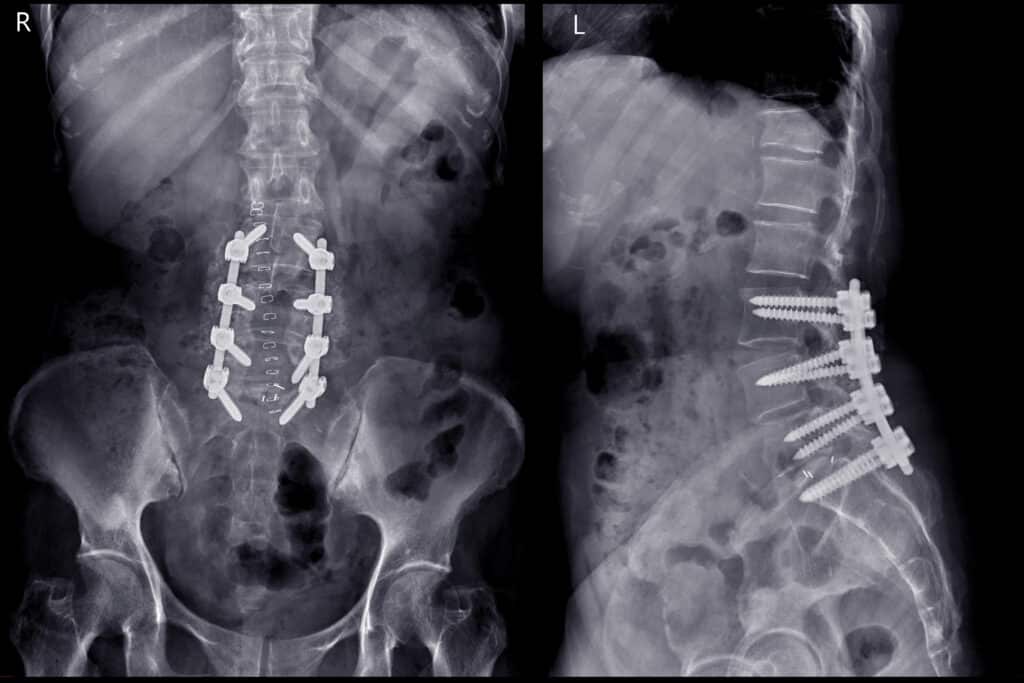
Spinal decompression at home can be a safe and effective way to treat mild to moderate back pain or spinal conditions. However, it’s not suitable for everyone.
Spinal decompression at home IS NOT appropriate for:
- People with severe or acute back pain caused by conditions such as fractures, infections, tumors, or spinal cord compression.
- People with medical conditions affecting their spine or blood circulation, such as osteoporosis, arthritis, diabetes, or heart disease.
- People who have implants or devices in their spine, such as screws, rods, or pacemakers.
Spinal decompression at home IS appropriate for:
- People with chronic or recurrent back pain caused by conditions such as bulging or herniated discs, sciatica, spinal stenosis, or facet joint syndrome.
- People who have tried medication, physical therapy, or chiropractic care and have not found lasting relief.
- People who want to avoid surgery or reduce their dependence on painkillers.
Before starting any spinal decompression program, it’s essential to consult your doctor and get a proper diagnosis and evaluation of your condition. Your doctor can advise whether spinal decompression suits you and how to do it safely and effectively.
Common Spinal Decompression Techniques

Spinal decompression can be done using various devices or exercises that gently stretch the spine to relieve pressure between the discs.
We want to note that most of these methods require some equipment or supervision in a clinical setting. In the following section, we will dig into some alternatives that can be done in the comfort of your home.
Inversion table
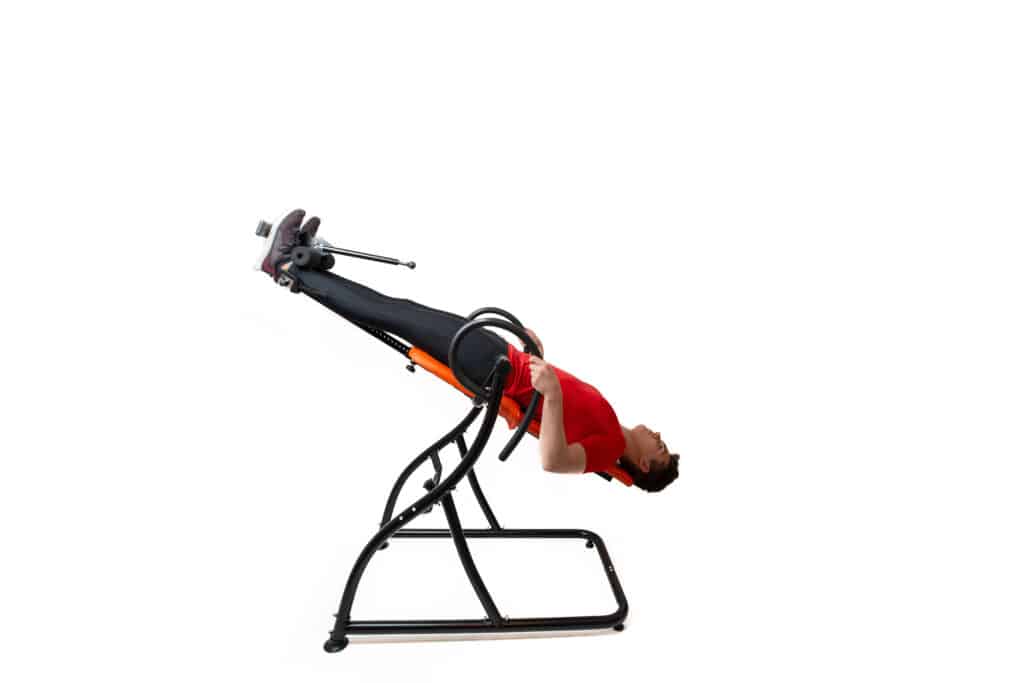
An inversion table is a device that allows you to hang upside down or at an angle, using gravity to decompress your spine.
Note: Inversion tables may not be the best option for some people. If you have dizziness, vertigo, or high blood pressure issues, consult your doctor or physical therapist before using this device.
To use an inversion table, you will secure your ankles on the footrests and slowly tilt the table until you reach a comfortable position. Depending on your tolerance, you can stay inverted for a few minutes or longer. You can also do gentle inverted movements or stretches, such as twisting your torso or reaching your arms overhead.
To get off the table, you slowly return to the upright position and rest before standing up. If any of these movements seem outside your general abilities, it’s best to consider the following options or consult with your doctor about alternatives.
Traction Devices
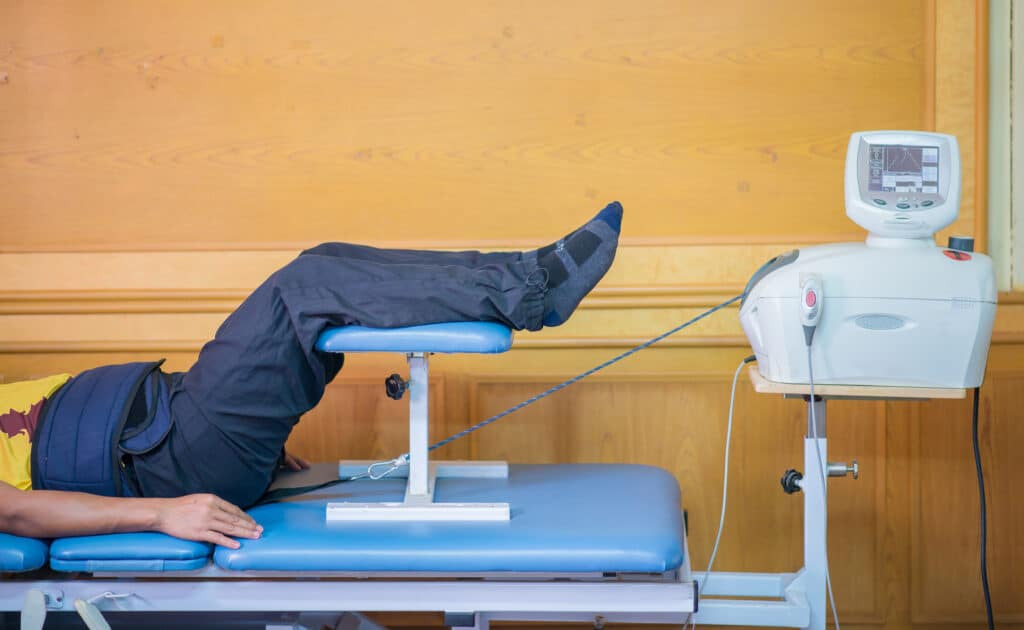
A traction device is a device that applies a controlled force to your spine using a harness, a pulley system, or a motorized unit.
To use a traction device, you will attach the harness to your chest or pelvis and lie down on a flat surface. The device pulls your spine in opposite directions, creating a decompression effect.
You can adjust the amount and duration of the force according to your comfort and needs. You can also do relaxation or breathing exercises while using the device.
While decompression and spinal traction devices are effective, they are generally only available in clinical settings.
Decompression belt
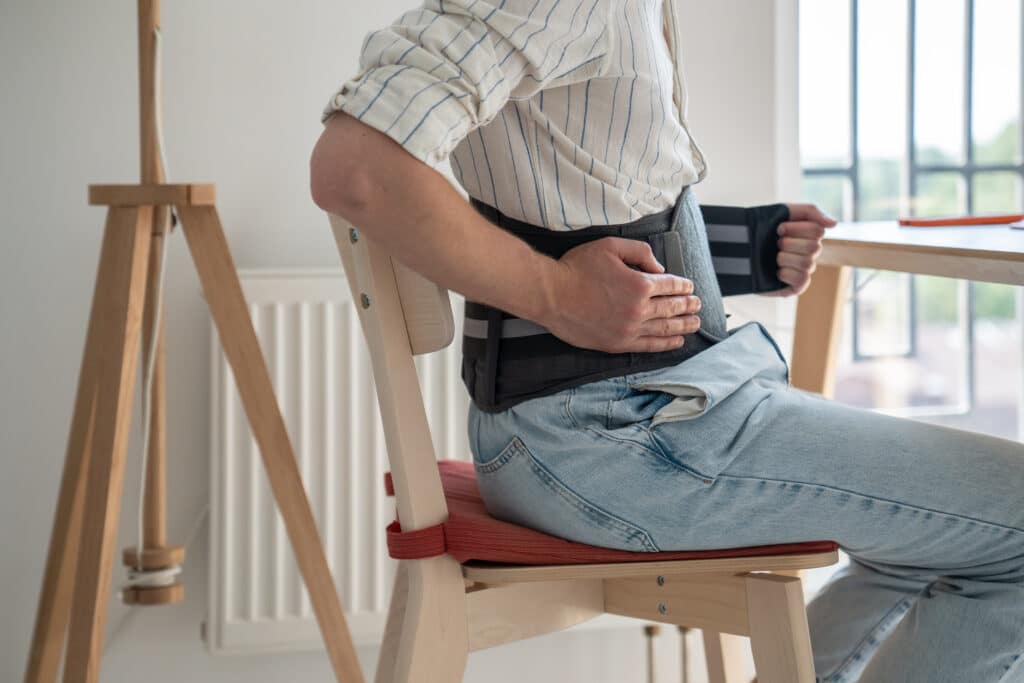
A decompression belt is a device that wraps around your waist and inflates with air, creating a decompression effect on your lower spine.
To use a decompression belt, place it around your waist and secure it with Velcro straps. Then, pump air into the belt using a hand pump until you feel a gentle stretch on your lower back.
Depending on your condition and preference, you can wear the belt for up to an hour. You can also do light activities or exercises while wearing the belt, such as walking or bending.
Decompression belts are safe for many people and can be purchased online at various retailers.
Exercises for Spinal Decompression at Home
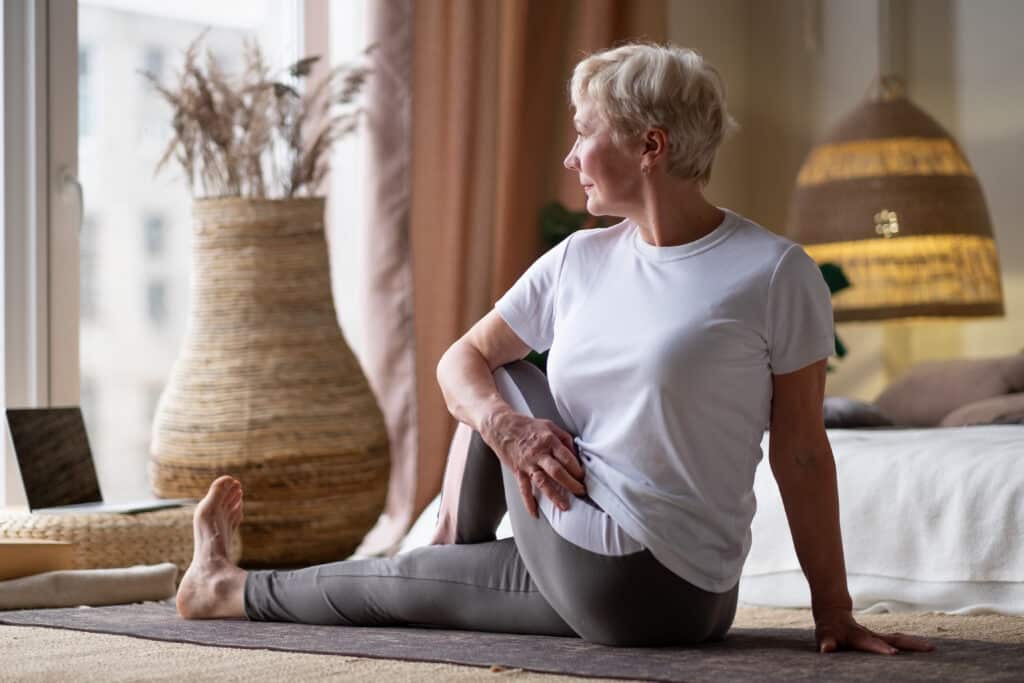
Spinal decompression exercises can help stretch and lengthen the spine, creating negative pressure inside the discs and relieving the pressure on the nerves.
Here are some of our favorite simple and safe spinal decompression exercises you can do at home.
Note: Always consult with your doctor before beginning any exercise program.
Supine Spine & Shoulder Stretch
This relaxing exercise can help decompress your spine and reduce stress and tension.
- Lie on your back with your knees bent and your feet flat on the floor.
- As you inhale, keep your arms straight as you lift them overhead, resting on the floor, a pillow, or a rolled-up blanket. In this video, the exercise is being completed while holding our PhysioStick. You can also use a towel, a broom handle, or with empty hands.
- Hold this position for 5 breaths. Focus on relaxing and elongating your spine.
- Exhale as you bring your arms back to your sides.
- Repeat this exercise as needed.
Side-Lying Spinal Twist
This exercise can help to decompress your spine and relieve mid- and low-back pain.
- Lie on your side with your head supported on a pillow and your arms extended in front of you with your palms touching.
- Slowly open your arms until your chest faces the ceiling. Let your gaze follow your top hand into the twist. Stop when you feel a stretch.
- Slowly return to the start position and repeat 5-7 times slowly.
- Repeat on the other side.
Heel Slides
This exercise can help strengthen, stretch, and mobilize your spine.
- Lie on your back with your legs straight.
- Bend your right knee and slowly slide your heel towards your hip.
- Slowly straighten your leg.
- Repeat 10 times, then switch sides. Repeat if desired.
Knee-to-Chest
This exercise decompresses your spine and stretches your hips and glutes.
- Lie on your back with your legs extended. Bend your right knee and bring it toward your chest, wrapping your arms around your shin.
- Pull your knee closer to your chest and feel your lower back, hip, and glutes stretch.
- Hold this stretch for 20 to 30 seconds while breathing deeply.
- Switch sides and repeat. Do 2 to 3 sets on each side.
Child’s Pose
This yoga pose can help relax and decompress the spine, especially the lower back.
- Kneel on the floor with your knees slightly apart and your toes touching.
- Lean forward and rest your forehead on the floor, extending your arms in front of you or by your sides. You can also place a pillow under your chest or forehead for extra comfort.
- You should feel a gentle stretch on your back and hips. Hold this position for 30 seconds or longer, breathing deeply and relaxing your muscles.
Cat-Cow Stretch
This yoga pose can help mobilize and decompress the spine, especially the upper back.
- Get on all fours on the floor, with your hands under your shoulders and your knees under your hips.
- Arch your back and look up, inhaling deeply. This is the cow pose.
- Next, round your back and tuck your chin to your chest, exhaling deeply. This is the cat pose.
- You should feel a gentle stretch on your spine and neck. Repeat this movement 10 times or more, alternating between the two poses.
Cobra Pose
This yoga pose can help extend and decompress the spine, especially the lower back.
- Lie on your stomach on the floor, with your legs straight and your toes pointing back.
- Place your hands under your shoulders and lift your chest off the floor, keeping your elbows slightly bent. Look forward or slightly up, depending on your comfort level.
- You should feel a gentle stretch on your lower back and abdomen. Hold this position for 15 seconds or longer, breathing deeply and relaxing your muscles.
Long-term Fixes for Back Pain
Any of these techniques can temporarily relieve back pain or spinal conditions, but it is not a permanent solution.
To prevent or reduce back pain in the long term, you need to address the underlying causes and factors that contribute to it rather than simply relying on treatment once your back pain becomes a problem.
Here are some general recommendations for getting to the bottom of what’s causing back pain before it requires treatment.
Lifestyle changes
Lifestyle factors affecting your back health include proper or improper posture, weight, stress level, and habits.
It’s best practice to avoid prolonged sitting or standing, lifting heavy objects if you’re unprepared, or wearing shoes with elevated heels.
You should also do your best to use proper ergonomics when working or using computers, tablets, or cell phones. Adjust your chair, desk, keyboard, and monitor to suit your height and comfort.
Strengthening exercises
General core strength can also help prevent injuries and falls that can cause back pain.
Exercises like planks, bridges, squats, lunges, and deadlifts can help strengthen your back and core muscles. These exercises can help support your spine and improve your stability and balance.
However, it should be noted that these sorts of exercises should be done under proper supervision and should always be bookended by a warm-up and cool-down. Talk to your physical therapist about the best core and stabilization exercises for your body.
Medical treatments
Medication, injections, physical therapy, chiropractic care, acupuncture, massage therapy, or surgery are all commonly recommended clinical interventions for back pain.
These treatments are often recommended to help reduce pain, inflammation, muscle spasms, nerve compression, or structural problems around the spine. Your doctor should clear any medical procedures or exercises to ensure you get the safest possible back pain treatment.
Summary
Back pain significantly affects daily activities and quality of life for millions of people, but spinal decompression at home offers a potential solution without the need for hospital visits. This method, particularly beneficial for older adults with chronic back issues, can alleviate pain, enhance mobility, and sometimes serve as an alternative to surgery. The guide provides an overview of non-surgical decompression techniques, including specific exercises and devices that can be used safely at home. It also outlines who might benefit from these methods and who should avoid them, ensuring a comprehensive approach to managing back health and improving overall well-being.
Key Takeaways
- Spinal decompression, performed in the comfort of home, can lessen back pain and increase mobility, offering an alternative to hospital visits or surgery.
- Home-based decompression techniques involve specific exercises or devices that gently stretch the spine, alleviate disc pressure, and reduce nerve stress.
- Older adults can reap many benefits, including pain and inflammation reduction, enhanced mobility, surgery delay, and a boost in life quality.
- At-home decompression isn’t for everyone, but it can benefit those with recurring back pain from conditions like herniated discs or spinal stenosis or those who didn’t find relief from other treatments.
- Techniques for spinal decompression range from inversion tables and traction devices to decompression belts, but always consult a healthcare provider before starting a program.
- For long-lasting back health, addressing the root causes of back pain is vital. This includes lifestyle changes like maintaining good posture, weight management, stress reduction, and using ergonomic workplace practices.
- Strengthening exercises targeting back and core muscles can help prevent injuries leading to back pain, while medical treatments offer effective clinical intervention for managing it. However, these should be adopted under professional medical advice.
FAQs
How quickly can one expect to see changes with at-home spinal decompression methods?
The journey toward pain relief via at-home spinal decompression is unique for everyone. It hinges upon several factors, including the individual’s specific condition, symptom severity, overall health, and adherence to the prescribed techniques.
Some might observe a significant reduction in symptoms within a few days or weeks, while others may require a few months. The key is to understand that at-home spinal decompression is a journey, and progression may be a slow, steady process.
Could at-home spinal decompression exercises or devices potentially have any side effects or risks?
While generally considered safe, at-home spinal decompression exercises and devices are not without potential risks, particularly if performed incorrectly or without appropriate guidance. Risks could range from heightened pain and muscle strains to rare disc or nerve damage.
Moreover, people with certain pre-existing medical conditions like osteoporosis, hypertension, or heart disease might face increased risks. Hence, it’s crucial to consult a healthcare provider before starting a new treatment regimen.
Is effectiveness significantly different between at-home spinal decompression and professional treatments?
At-home spinal decompression techniques can effectively manage certain types of back pain, especially for individuals with mild to moderate symptoms. However, more severe or complex cases might find that professional treatments like physical therapy or chiropractic care provide more comprehensive and effective solutions.
These treatments offer personalized guidance and potential adjustments based on individual progress and treatment response. While at-home methods can supplement professional care, they may not replace it entirely for all patients.
References
- Diwan, S., Sayed, D., Deer, T. R., Salomons, A., & Liang, K. (2019). An Algorithmic Approach to Treating Lumbar Spinal Stenosis: An Evidenced-Based Approach. Pain Medicine, 20(Supplement_2), S23-S31. https://doi.org/10.1093/pm/pnz133
- Cairns, K., Deer, T., Sayed, D., van Noort, K., & Liang, K. (2019). Cost-effectiveness and Safety of Interspinous Process Decompression (Superion). Pain Medicine, 20(Supplement_2), S2-S8. https://doi.org/10.1093/pm/pnz245
- Apfel, C.C., Cakmakkaya, O.S., Martin, W. et al. Restoration of disk height through non-surgical spinal decompression is associated with decreased discogenic low back pain: a retrospective cohort study. BMC Musculoskelet Disord 11, 155 (2010). https://doi.org/10.1186/1471-2474-11-155
- Geraldine I. Pellecchia, MA, PT. “Lumbar Traction: A Review of the Literature.” Journal of Orthopaedic & Sports Physical Therapy, vol. 20, no. 5, 1994, pp. 262. JOSPT, https://www.jospt.org/doi/pdf/10.2519/jospt.1994.20.5.262.

